Accepted Scientific Name: Turbinicarpus pseudomacrochele var. sphacellatus Diers & G.Frank
Kakteen Sukk. 44(8): 160 (1993), contrary to Art. 37.3 ICBN (1988).
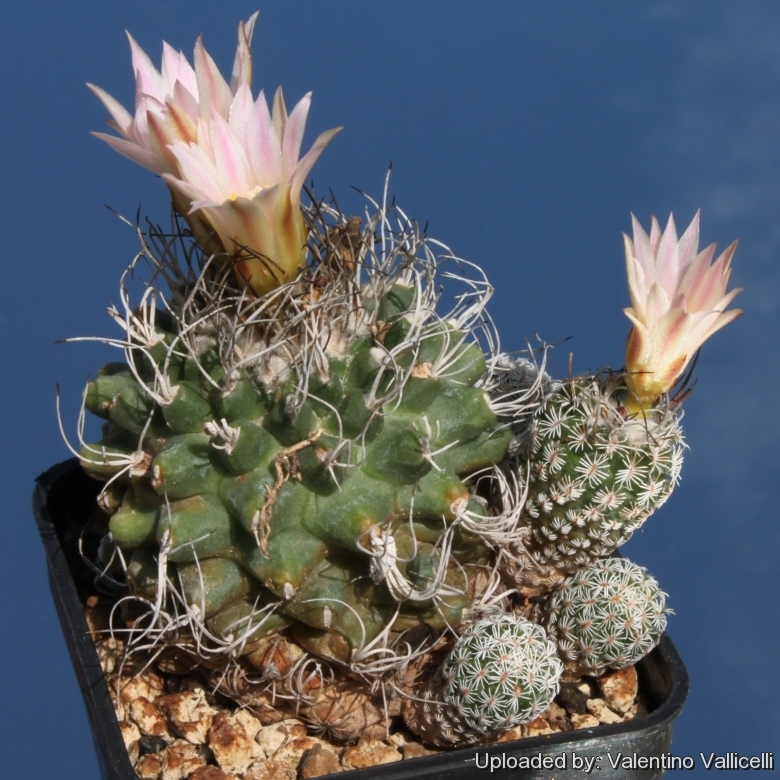
Turbinicarpus sphacelatus (Turbinicarpus pseudomacrochele var. sphacellatus) Photo by: Valentino Vallicelli
Origin and Habitat: Mexico Northeast (Hidalgo, Querétaro) Exact locality unknown.
Synonyms:
See all synonyms of Turbinicarpus pseudomacrochele
Description: Turbinicarpus pseudomacrocheleSN|25952]]SN|12802]] var. sphacellatus is a controversial taxon intermediate between Turbinicarpus pseudomacrocheleSN|12802]]SN|12802]] subs. krainzianus and Turbinicarpus pseudomacrocheleSN|12802]]SN|12802]] subs. lausseri. It had been discovered by Krainz, but never found again in habitat. Some authors (Zanovello) suggest that it is an hybrid. It was previously known with the provisional name Turbinicarpus cirrhiferusSN|12802]]SN|25952]].
Stems: Up to 4 cm tall and wide, single or (usually) offsetting from the base, globular to slightly cylindrical.
Roots: Tuberous.
Ribs: Not clearly defined and tubercled.
Tubercles: Mostly round-shaped and broad, more or less in relief and narrow.
Areoles: White, woolly becoming bare as they ages. Clearly elongated in seedlings almost round in older specimens.
Radial spines: About 14-17 pectinate, white, short, present only on seedlings and young offsets and progressively disappearing in older stems.
Central spines: 6 to 8 produced only in mature specimens, up to 2,5 cm long, thin, bristle-like, often tangled and bent at the apex, whitish-yellow, light brownish with darker tips, later becoming grey.
Flowers: From the young areoles at the apex among the spines, 3-4,5 cm in diameter, funnel-shaped with about 15-20 tepals. Pericarpel cup-shaped narrowing between the pericarpel and receptacle with few scales. Outer perianth segments obovate to lanceolate, olive-brownish to pale pink with purple-brownish mid-stripe. Inner perianth segments more lanceolate 12-18 mm long, 3-5 mm wide, white with purple-pink mid-stripe. Stamens 60-100, filaments creamy coloured anthers yellow. Style pinkish. Stigma divided into 4-5 white lobes.
Blooming season: It flowers several times per year.
Fruit: About 5-6 mm long an3-4 mm diameter oval to barrel-shaped, greenish becoming olive-brownish when ripe. Dehishing lengthways at maturity, with about 20-30 seeds.
Seeds: 1,3-1,5 mm long ad 0,8-1,2 mm broad, pyrform to cap shaped, glossy, black-dark brown.
Subspecies, varieties, forms and cultivars of plants belonging to the Turbinicarpus pseudomacrochele group
 Turbinicarpus pseudomacrochele (Backeb.) Buxb. & Backeb.: (ssp. pseudomacrochele) has fatter pale green, low tubercles, much bigger flowers up to 3,5 cm in diameter and pure white or rose-colored flowers with dark pink midveins. Distribution: Hidalgo and Queretaro.
Turbinicarpus pseudomacrochele (Backeb.) Buxb. & Backeb.: (ssp. pseudomacrochele) has fatter pale green, low tubercles, much bigger flowers up to 3,5 cm in diameter and pure white or rose-colored flowers with dark pink midveins. Distribution: Hidalgo and Queretaro. Turbinicarpus pseudomacrochele subs. krainzianus (G.Frank) Glass: The stem is dark green, with tapering, somewhat pointed tubercles, and yellowish cream or greenish-yellow flowers to only 2 cm in diameter. Distribution uncertain.
Turbinicarpus pseudomacrochele subs. krainzianus (G.Frank) Glass: The stem is dark green, with tapering, somewhat pointed tubercles, and yellowish cream or greenish-yellow flowers to only 2 cm in diameter. Distribution uncertain. Turbinicarpus pseudomacrochele subs. krainzianus cv. Lilliput: it is a neotenic form with thin finger-like stems.
Turbinicarpus pseudomacrochele subs. krainzianus cv. Lilliput: it is a neotenic form with thin finger-like stems. Turbinicarpus pseudomacrochele var. krainzianus f. cristatus: Crested form.
Turbinicarpus pseudomacrochele var. krainzianus f. cristatus: Crested form. Turbinicarpus pseudomacrochele subs. lausseri (Diers & G.Frank) Glass: The stem is dark green, the tubercles are pointed and deep. Flowers reddish purple up to to 2,5 cm in diameter. Distribution: Sierra del Doctor, Queretaro.
Turbinicarpus pseudomacrochele subs. lausseri (Diers & G.Frank) Glass: The stem is dark green, the tubercles are pointed and deep. Flowers reddish purple up to to 2,5 cm in diameter. Distribution: Sierra del Doctor, Queretaro. Turbinicarpus pseudomacrochele subs. minimus (G.Frank) Lüthy & A.Hofer: Similar to Turbinicarpus pseudomacrochele ssp. krainzianus, but smaller, with stem elongated up to 4 cm high, 8-12 mm in diameter, deep napiform root.
Turbinicarpus pseudomacrochele subs. minimus (G.Frank) Lüthy & A.Hofer: Similar to Turbinicarpus pseudomacrochele ssp. krainzianus, but smaller, with stem elongated up to 4 cm high, 8-12 mm in diameter, deep napiform root. Turbinicarpus pseudomacrochele subs. minimus f. cristatus hort.: Crested form.
Turbinicarpus pseudomacrochele subs. minimus f. cristatus hort.: Crested form. Turbinicarpus pseudomacrochele var. sphacellatus Diers & G.Frank: intermediate between Turbinicarpus pseudomacrochele subs. krainzianus and Turbinicarpus pseudomacrochele subs. lausseri. Distribution: unkown.
Turbinicarpus pseudomacrochele var. sphacellatus Diers & G.Frank: intermediate between Turbinicarpus pseudomacrochele subs. krainzianus and Turbinicarpus pseudomacrochele subs. lausseri. Distribution: unkown.
Bibliography: Major references and further lectures
1) Edward Anderson “The Cactus family” Timber Press, Incorporated, 2001
2) James Cullen, Sabina G. Knees, H. Suzanne Cubey "The European Garden Flora Flowering Plants: A Manual for the Identification of Plants Cultivated in Europe, Both Out-of-Doors and Under Glass" Cambridge University Press, 11/Aug/2011
3) David R Hunt; Nigel P Taylor; Graham Charles; International Cactaceae Systematics Group. "The New Cactus Lexicon" dh books, 2006Jackie M. Poole, William R. Carr, Dana M. Price, Jason R. Singhurst “Rare plants of Texas: a field guide” Texas A&M University Press, 30/Dec/2007
4) Lothar Diers and Gerhardt Frank, KuaS, 44(8):158-159, 1993
5) Milan Zachar, Roman Staník, Alexander Lux, Igor Dráb "Rod Turbinicarpus (Gattung Turbinicarpus)" Vydavate?stvo Roman Staník, 1996
6) Turbi-Now Issue 6, 1999, by Helmut Nagl and Harald Perndl.
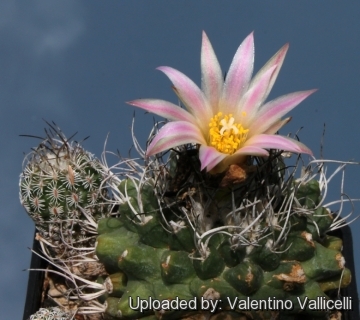 Turbinicarpus sphacelatus (Turbinicarpus pseudomacrochele var. sphacellatus) Photo by: Valentino Vallicelli
Turbinicarpus sphacelatus (Turbinicarpus pseudomacrochele var. sphacellatus) Photo by: Valentino Vallicelli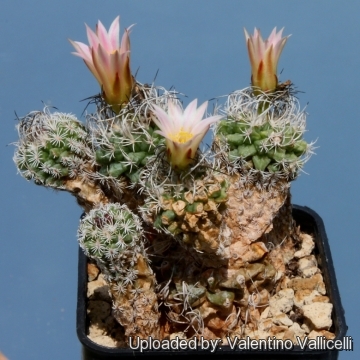 Turbinicarpus sphacelatus (Turbinicarpus pseudomacrochele var. sphacellatus) Photo by: Valentino Vallicelli
Turbinicarpus sphacelatus (Turbinicarpus pseudomacrochele var. sphacellatus) Photo by: Valentino Vallicelli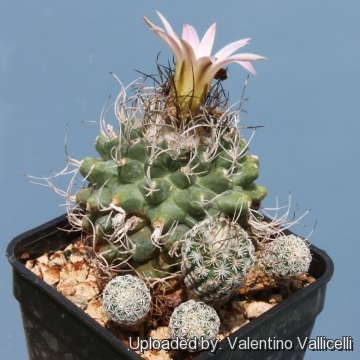 Turbinicarpus sphacelatus (Turbinicarpus pseudomacrochele var. sphacellatus) Photo by: Valentino Vallicelli
Turbinicarpus sphacelatus (Turbinicarpus pseudomacrochele var. sphacellatus) Photo by: Valentino Vallicelli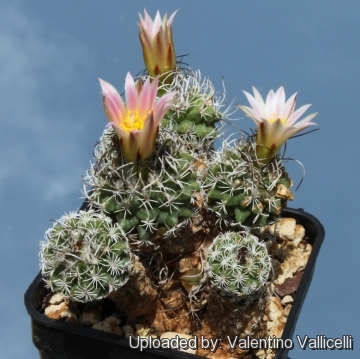 Turbinicarpus sphacelatus (Turbinicarpus pseudomacrochele var. sphacellatus) Photo by: Valentino Vallicelli
Turbinicarpus sphacelatus (Turbinicarpus pseudomacrochele var. sphacellatus) Photo by: Valentino VallicelliCultivation and Propagation: It is a summer-growing species fairly easy and robust to cultivate, but very slow growing. This plant is xerophytic, adapted to dry soils and is quite susceptible to over-watering if kept in a non ventilated place.
Growth rate: Slow-growing.
Soil: Grow it in an open mineral, sandy-gritty cactus compost and provide a very good drainage.
Exposure: It is suited for sunny-brightly exposure, but can tolerate light shade. However it will do its best only with lots of sun and become stressed with inadequate light which could result in poor growth and unnatural shape. Direct sun is also beneficial in order to get a good spine growth. It has a good heat tolerance.
Watering: Waterings should be rather infrequent to keep the plant compact, and avoid its becoming excessively elongated and unnatural in appearance. Furthermore it has a tap root, and watering it properly is often difficult, because it tends to crack open or rot if over-watered. Keep dry in winter or when night temperatures remain below 10° C. Mature individuals easily rot and die especially after transplanting so be extremely cautious with watering, keep rootneck dry. Water it less than average if in bigger pots.
Fertilization: Feed them once during the growing season with a fertilizer specifically formulated for cactus and succulents (high potash fertilizer with a dilute low nitrogen), including all micro nutrients and trace elements diluted to ½ the strength recommended on the label. They thrive in poor soils and need a limited supplies of fertilizer to avoid the plants developing excess vegetation, which is easily attacked by fungal diseases.
Special need: It is suited for airy exposures. Provide very good ventilation. Nearly all problems occur as a result of overwatering and poor ventilation, especially when weather conditions are dull and cool or very humid. They must have very dry atmosphere.
Hardiness: It likes warmth (recommended minimum winter temperature 5° C) But plants kept perfectly dry can easily survive a light frost.
Pests & diseases: These cacti may be attractive to a variety of insects, but plants in good condition should be nearly pest-free, particularly if they are grown in a mineral potting-mix, with good exposure and ventilation. Nonetheless, there are several pests to watch for:
- Red spiders: Red spiders may be effectively rubbed up by misting the plants from above.
- Mealy bugs: Mealy bugs occasionally develop aerial into the new leaves and flowers with disfiguring results, but the worst types develop underground on the roots and are invisible except by their effects.
- Rot: Rot is only a minor problem if the plants are watered and “aired” correctly. If they are not, fungicides won't help all that much.
Reproduction: From seed, since the plant rarely produces plantlets, or grafted. The seeds can be sown in pots of fine, well-drained sandy soil, any time during the spring when temperatures are warm. Cover the seeds with a fine layer of grit and water from below with a fungicide to prevent damping off. For the 1-2 weeks cover the pots with a sheet of glass/clear perspex to keep the humidity levels high. Remove the glass and replace it with light shade-cloth and mist once or twice a day for the next two weeks after which most seeds should have germinated. From then on mistings can be reduced to every second and then every third day as the little plants grow. The seedlings should not be disturbed until they are well rooted after which they can be planted separately in small pots. Sometimes it is grafted to avoid root rot problems as plants grafted on an hardy stock are easy to grow and no special skill is required.














